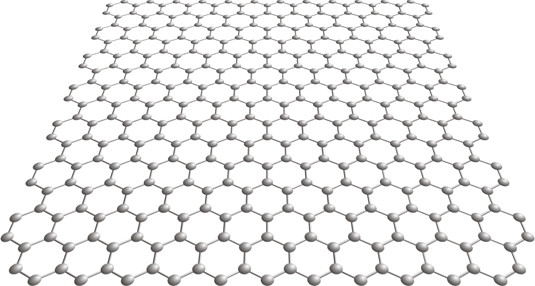Samsung's Graphene Breakthrough Paves Way For Flexible Phones Of The Future, And More.
Samsung Advanced Institute of Technology (SAIT) in collaboration with Sungkyunkwan University’s School of Advanced Materials Science and Engineering have announced a breakthrough in the synthesis procedure and speed for the commercialization of graphene. It makes sense that Samsung initiated this research as graphene (famous as a wonder material in electronics) has a huge scope in the several applications concerning electrical industry. Not only can it be used to develop better battery technologies, but the material could even be employed in creating super-strong yet flexible screens. Graphene wins over steel in both durability and flexibility. It's a great conductor of heat and electricity - hundred times better for electron and silicon flow.

Now of the new method-
Large-area graphene is synthesized onto a single crystal on a semiconductor, its mechanical and electrical properties intact. This new method employed is able to perform this activity repeatedly on the current semiconductor wafer scale. Now why it's being hailed as a breakthrough is because earlier, multi-crystal synthesis posed many obstacles, and the process led to the deterioration of the electric and mechanical properties of the substance which strained its application range. The team comprising fourteen researchers have published their #-Link-Snipped-# in Science magazine dated April 3rd.
What's really exciting about the research is the scope it's offering, the huge implications it will have on the upcoming devices which will perform both faster, better and even survive longer. I read a recent report on graphene somewhere which stated that the material can bring internet to smartphones at 100x the speed we have today owing to the fact that it can convert light more quickly that the existing smartphone components. Also, graphene being lightweight could again be a positive indication that it sees it's way to wearables faster.
Samsung already features a flexible screen smartphone in its portfolio, but the sales figures were not promising enough. It's planning to launch an array of flexible devices -bendable and foldable- in 2015. Graphene surely must feature in this strategy.

Now of the new method-
Large-area graphene is synthesized onto a single crystal on a semiconductor, its mechanical and electrical properties intact. This new method employed is able to perform this activity repeatedly on the current semiconductor wafer scale. Now why it's being hailed as a breakthrough is because earlier, multi-crystal synthesis posed many obstacles, and the process led to the deterioration of the electric and mechanical properties of the substance which strained its application range. The team comprising fourteen researchers have published their #-Link-Snipped-# in Science magazine dated April 3rd.
What's really exciting about the research is the scope it's offering, the huge implications it will have on the upcoming devices which will perform both faster, better and even survive longer. I read a recent report on graphene somewhere which stated that the material can bring internet to smartphones at 100x the speed we have today owing to the fact that it can convert light more quickly that the existing smartphone components. Also, graphene being lightweight could again be a positive indication that it sees it's way to wearables faster.
Samsung already features a flexible screen smartphone in its portfolio, but the sales figures were not promising enough. It's planning to launch an array of flexible devices -bendable and foldable- in 2015. Graphene surely must feature in this strategy.
0
